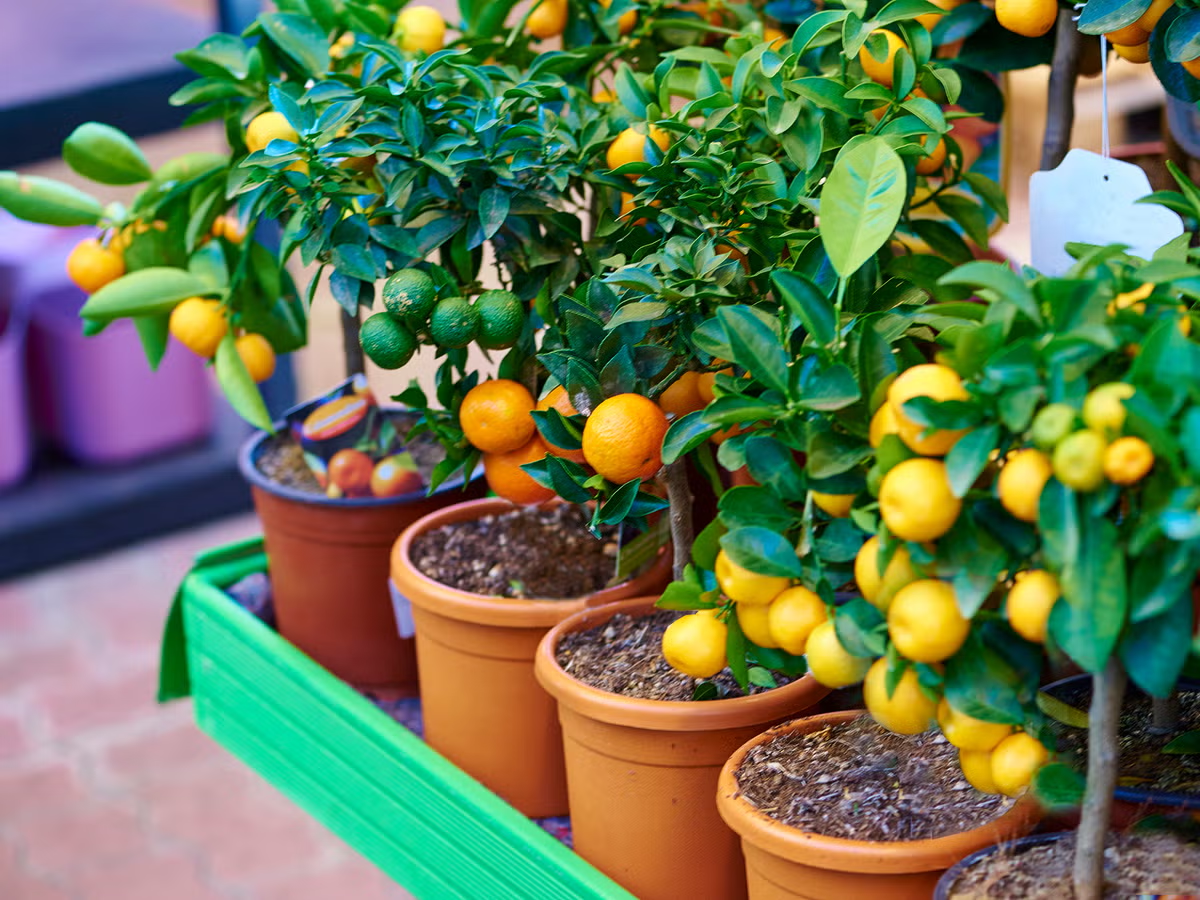Tips on Choosing the Right Fruit Tree for Your Garden

The first step in selecting the right fruit tree is to understand your local climate and soil conditions. Britain has a temperate maritime climate, characterized by mild temperatures and moderate rainfall throughout the year. However, there are regional variations that can influence the types of fruit trees that will thrive in your area. For instance, southern regions generally experience milder winters and warmer summers, while northern and inland areas can have cooler temperatures and more frost.
Soil quality is another critical factor. Fruit trees prefer well-drained soil rich in organic matter. Before planting, it’s advisable to conduct a soil test to determine its pH and nutrient levels. Most fruit trees prefer slightly acidic to neutral soil (pH 6.0-7.0). If your soil is too acidic or alkaline, you may need to amend it to create optimal growing conditions.
Selecting the Right Fruit Tree Variety
Once you have assessed your climate and soil, the next step is to choose the type of fruit tree that will grow best in your garden. There are numerous fruit trees to choose from, also seen on CRJ Fruit Trees, each with its own unique requirements and benefits.
Apple Trees
Apple trees are among the most popular fruit trees in Britain due to their adaptability and the wide variety of cultivars available. They can be grown in most parts of the country, provided they receive adequate sunlight and are protected from strong winds. When selecting an apple tree, consider the variety’s resistance to common diseases such as apple scab and powdery mildew. Additionally, some apple varieties require cross-pollination, so you may need to plant more than one tree to ensure successful fruiting.
Pear Trees
Pear trees are another excellent choice for British gardens. They are generally hardy and can tolerate a range of soil types. Like apple trees, some pear varieties require cross-pollination, so planting multiple trees may be necessary. Pears prefer a sunny location with good air circulation to prevent fungal diseases.
Cherry Trees
Cherry trees can be a delightful addition to any garden, offering beautiful blossoms in the spring and delicious fruit in the summer. They thrive in well-drained soil and require a sunny location. Sweet cherry varieties often need cross-pollination, while sour cherries are usually self-fertile. Protecting cherry trees from birds, which are attracted to the fruit, is an important consideration.
Plum Trees
Plum trees are versatile and can grow in various soil types, provided they are well-drained. They can be divided into European and Japanese varieties, each with different requirements. European plums are generally more suited to the British climate. Plum trees can be self-fertile or require cross-pollination, so it’s essential to check the specific needs of the variety you choose.
Rootstocks and Tree Size
The size of your fruit tree is largely determined by the rootstock onto which it is grafted. Rootstocks influence the tree’s vigor, disease resistance, and eventual height. There are three main categories of rootstocks: dwarf, semi-dwarf, and standard.
Dwarf Rootstocks
Dwarf rootstocks produce smaller trees, typically reaching 2-3 meters in height. These trees are ideal for small gardens or for those who prefer easier maintenance and harvesting. Dwarf trees often require staking and support due to their smaller root systems.
Semi-Dwarf Rootstocks
Semi-dwarf rootstocks result in medium-sized trees, usually between 3-4.5 meters tall. These trees offer a good balance between manageable size and fruit production. They are suitable for most gardens and are generally easier to maintain than standard-sized trees.
Standard Rootstocks
Standard rootstocks produce large trees that can reach over 4.5 meters in height. These trees are best suited for large gardens or orchards. While they can produce a significant amount of fruit, they require more space and maintenance.
Pollination Requirements
Pollination is a critical factor in fruit production. Some fruit trees are self-fertile, meaning they can produce fruit on their own, while others require cross-pollination from another tree of the same species. Understanding the pollination requirements of your chosen fruit tree is essential to ensure successful fruiting.
Self-Fertile Trees
Self-fertile trees can produce fruit without the need for another tree. This makes them a convenient choice for smaller gardens or for those who only want to plant one tree. Examples of self-fertile trees include some varieties of plums and sour cherries.
Cross-Pollination
Trees that require cross-pollination need a compatible partner tree nearby to produce fruit. This means planting two or more trees that flower at the same time. Apples and pears often fall into this category. When selecting trees for cross-pollination, make sure they are within 50 meters of each other to ensure bees and other pollinators can effectively transfer pollen.
Planting and Maintenance
Proper planting and maintenance are crucial to the success of your fruit tree. Follow these guidelines to ensure your tree establishes well and remains healthy.
Planting
- Timing: The best time to plant fruit trees in Britain is during the dormant season, from late autumn to early spring. This allows the tree to establish its roots before the growing season begins.
- Site Preparation: Choose a sunny, sheltered location with well-drained soil. Dig a hole that is twice the width of the tree’s root ball and just as deep. Add organic matter, such as compost, to the soil to improve fertility.
- Planting the Tree: Make sure that the graft union (the point where the tree is attached to the rootstock) is above the dirt line when you put the tree in the hole. Put dirt back into the hole and gently press it down around the roots. After placing the tree, give it a lot of water.
Watering and Feeding
Young fruit trees need to be watered often, especially when it’s dry outside. Most fruit trees can handle some weather once they are established, but they need to be watered regularly during the growing season so that the fruit grows well. Putting mulch around the tree’s base can help it stay moist and keep bugs away.
If you use a balanced fertiliser on your fruit tree in the spring, it will grow well and produce more fruit. Don’t give your plants too much fertiliser, as that can cause too much vegetative growth and not enough flowering.
Pruning
Pruning is essential for maintaining the health and productivity of your fruit tree. It helps to shape the tree, remove dead or diseased wood, and promote better air circulation. Pruning should be done during the dormant season, typically in late winter.
Each type of fruit tree has specific pruning requirements, so it’s important to follow guidelines for the particular species you are growing. Generally, aim to create an open, vase-shaped structure for better light penetration and air circulation.
Pests and Diseases
Fruit trees are susceptible to various pests and diseases that can affect their health and productivity. Regular monitoring and early intervention are key to managing these issues.
Common Pests
- Aphids: Small, sap-sucking insects that can cause distorted growth and reduce fruit quality. Introduce natural predators, such as ladybirds, or use insecticidal soap to control infestations.
- Codling Moth: A common pest of apple and pear trees. The larvae burrow into the fruit, causing it to become inedible. Use pheromone traps and apply insecticides if necessary.
- Birds: Birds can cause significant damage to fruit crops, particularly cherries. Netting and bird scarers can help protect your harvest.
Common Diseases
- Apple Scab: A fungal disease that affects apple trees, causing dark, scabby lesions on leaves and fruit. Plant resistant varieties and practice good garden hygiene to reduce its impact.
- Fire Blight: A bacterial disease that affects apple and pear trees, causing branches to die back. Prune out infected branches and avoid excessive nitrogen fertilization, which can promote the disease.
- Powdery Mildew: A fungal disease that affects many types of fruit trees, causing a white, powdery coating on leaves. Ensure good air circulation and use fungicidal sprays if needed.
Harvesting and Storage
The final reward of growing fruit trees is the harvest. Knowing when and how to harvest your fruit is essential to ensure it is at its best quality and flavor.
Harvesting
- Timing: Harvest times vary depending on the type of fruit tree and the specific variety. Apples and pears are typically harvested from late summer to early autumn, while cherries and plums are often ready in mid-summer. Check the fruit for ripeness by gently lifting or twisting it; ripe fruit should come away easily from the tree.
- Handling: Handle fruit with care to avoid bruising. Use a ladder or fruit picker for higher branches to prevent damaging the tree.
Storage
Proper storage can extend the shelf life of your fruit and allow you to enjoy it for longer.
- Cool, Dry Place: Store apples and pears in a cool, dry place with good air circulation. Many varieties can be kept for several months under the right conditions.
- Refrigeration: Some fruits, like cherries and plums, benefit from refrigeration to prolong their freshness. Use perforated plastic bags or containers to store them.
- Processing: Excess fruit can be processed into preserves, jams, and other products. This is a great way to reduce waste and enjoy your harvest throughout the year.
Conclusion
Choosing the right fruit tree for your garden in Britain involves careful consideration of your local climate, soil conditions, and the specific requirements of different fruit tree varieties. By understanding these factors and following best practices for planting, maintenance, and pest management, you can ensure a healthy and productive fruit tree that will provide you with delicious fruits for many years. Whether you opt for apple, pear, cherry, or plum trees, the rewards of growing your own fruit are well worth the effort.











